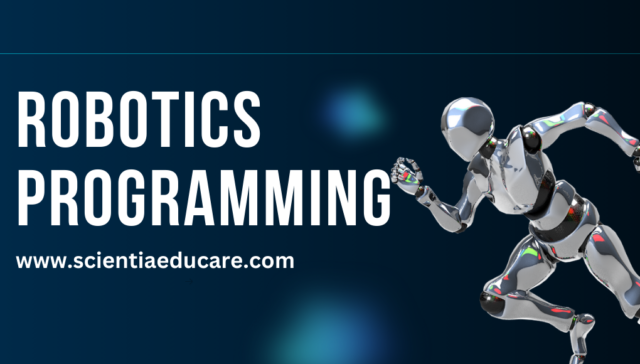Mastering Robotics Programming
Embarking on a career as a robotics programmer offers an exciting opportunity to be at the forefront of technological innovation. Robotics programmers design, develop, and implement software that enables robots to perform tasks autonomously or semi-autonomously. This comprehensive guide will walk you through the steps to become a robotics programmer, explore global job prospects, highlight top educational institutions, and provide resources for further reading.
Beginner robotics programming course,
Best coding languages for robotics,
Hands-on robotics programming projects,
Robotics programming tutorials for beginners,
How to start learning robotics programming
Understanding the Role of a Robotics Programmer
A robotics programmer is responsible for creating and refining the software that controls robotic systems. This involves writing code, testing algorithms, and collaborating with engineers to integrate hardware and software components. Key responsibilities include:
- Developing Control Algorithms: Designing algorithms that dictate how robots perceive their environment and execute tasks.
- Programming Robotic Systems: Writing and debugging code in languages such as C++, Python, or Java to control robotic hardware.
- System Integration: Collaborating with mechanical and electrical engineers to ensure seamless integration of software with robotic hardware.
- Testing and Optimization: Conducting simulations and real-world tests to optimize performance and ensure reliability.
Educational Pathways
A strong educational foundation is crucial for a successful career in robotics programming. Here are the typical steps:
1. Earn a Bachelor’s Degree
Begin by obtaining a bachelor’s degree in a relevant field. Common majors include:
- Robotics Engineering: Offers specialized courses in robotics design, control systems, and automation.
- Computer Science: Focuses on programming, algorithms, and software development.
- Mechanical or Electrical Engineering: Provides an understanding of the hardware aspects of robotics.
Many universities offer interdisciplinary programs that combine these fields, providing a comprehensive education in robotics.
2. Gain Practical Experience
Hands-on experience is invaluable. Engage in internships, co-op programs, or research projects that involve robotics. Participating in university robotics clubs or competitions can also provide practical exposure and enhance your resume.
3. Consider Advanced Degrees
While not always required, a master’s or doctoral degree can open doors to advanced positions and research opportunities. Graduate programs allow for specialization in areas such as artificial intelligence, machine learning, or advanced robotics.
Essential Skills
To excel as a robotics programmer, develop the following skills:
- Programming Proficiency: Master languages commonly used in robotics, such as C++, Python, and Java.
- Mathematics: Strong understanding of linear algebra, calculus, and probability.
- Control Systems: Knowledge of how to design and implement control algorithms.
- Sensor Integration: Ability to work with various sensors and interpret their data.
- Problem-Solving: Strong analytical skills to troubleshoot and optimize systems.
Continuous learning is vital, as the field of robotics is rapidly evolving. Engage in online courses, workshops, and seminars to stay updated with the latest advancements.
Global Job Prospects
The demand for robotics programmers is growing worldwide, with opportunities in various industries such as manufacturing, healthcare, and logistics. Here are some platforms where you can explore job openings:
- JOINER Services: Specializes in contract robot programming jobs across various industries.
- Indeed: A global job search platform with listings for robotics programmers.
- LinkedIn: Professional networking site with job postings and networking opportunities in the robotics field.
Networking with professionals in the field and attending industry conferences can also lead to job opportunities.
Top Educational Institutions
Pursuing education at a reputable institution can provide a solid foundation and open doors in the robotics industry. Here are some top universities offering programs in robotics:
- Massachusetts Institute of Technology (MIT), USA: Offers a renowned robotics program through its Computer Science and Artificial Intelligence Laboratory (CSAIL).
- Carnegie Mellon University, USA: Known for its Robotics Institute, offering comprehensive programs in robotics.
- ETH Zurich, Switzerland: Provides cutting-edge research opportunities in robotics and intelligent systems.
- University of Tokyo, Japan: Offers advanced robotics research programs with a focus on humanoid robots.
- Indian Institute of Technology (IIT) Kanpur, India: Provides specialized courses and research opportunities in robotics engineering.
These institutions offer specialized courses and research opportunities in robotics engineering.
Further Reading
To deepen your understanding and stay updated with the latest trends in robotics programming, consider exploring the following resources:
- “Modern Robotics: Mechanics, Planning, and Control” by Kevin M. Lynch and Frank C. Park: A comprehensive textbook covering the fundamental principles of robotics.
- IEEE Robotics and Automation Society: Offers journals, conferences, and resources for robotics professionals.
- Robohub: An online platform featuring news, articles, and podcasts on robotics.
Engaging with these resources can provide valuable insights and keep you informed about the latest developments in the field.
Embarking on a career as a robotics programmer requires a blend of formal education, practical experience, and continuous learning. By following the outlined steps and leveraging the provided resources, you can position yourself for a successful and fulfilling career in this dynamic field.














